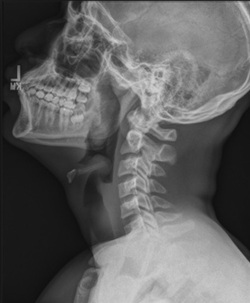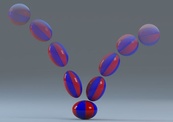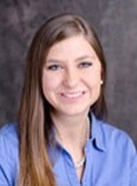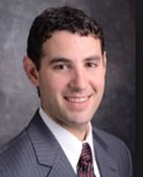 QUICK HIT CORE CONCEPTS
***Mortality in trauma increases dramatically with increased age, inc 7% mortality for each year over 65 in trauma ***Liver disease is the worst premorbid condition for trauma ***Standard trauma assessment is inadequate in elderly, particularly vital signs insensitive ***Falls: 10% significant injury, in geraitric population cervical spine fractures common ***Have decreased cardiac output, may not be able to mount adequate tachycardic response, may have occult shock. Have consideration for peri-traumatic MI both prior to trauma or stress of trauma causing MI ***Pulmonary issues: Decreased reserve, increased risk ARDS and atelectasis, CO2 narcosis ***CNS: High risk of subdural, clouded by questionable baseline mental status ***Renal: Often baseline poor GFR, CT Contrast can cause significant injury ***Trauma triage poor in elderly: Age >55 should be at a trauma center ***CMC TRAUMA ACTIVATION for geriatrics ATC 1:: Age >65: HR>100, SBP<110 ALERT:: Age >65 involved in MVC or fall from height ***MANAGEMENT Airway: Increased aspiration risk. Consider dentures. Consider high cervical spine risk and maintain proper imobilization. Consider increased response to induction agents: decreased your dose. Breathing: Decreased reserved, rapid desaturation. Use passive oxygenation. Use ETCO2. Consider increased risk of rib fractures. Circulation: Decreased response to catechols, on beta blockers; may not mount tachycardia appropriately. Consider RELATIVE hypotension. --Journal trauma study shows HR >90 and SBP <110 significant increased in mortality Disability: Central cord syndrome more common in elderly, may have "Hand burning", will have upper extremity weakness and capelike paresthesia ***SHOCK INDEX HR/Systolic blood pressure Normal less than 0.6, realistic threshold <0.8 More sensitive than HR or BP alone Even better: Shock index * Age should be <50 ***If concerned about fluids, use repeated small boluses (250ml) ***Anemia: Follow serial hemoglobins and transfuse early. Transfusion threshold controversial, starting thinking about it around 8 or persistent hypotension ***History: Keep in mind precipitating events, syncope in 10-15% of geriatric fall/MVC ***Identify blood thinner use!! Coumadin, plavix, ASA, Anti 10A, anti thrombin ***CAREFUL chest exam: Must identify rib fractures, flail chest; XRAY low sensitivity for these. Traumatic aortic dissection often does not have external signs of injury. ***Abdomen: Geriatric may NOT develop peritonitis despite significant intraabdominal injury ***LABS: Always get lactate; highly predictive of bad outcome >2 admit, >3 ICU, >4 call chaplain. (40% mortality in lact >4) Upgrade to ATC 2 if INR >2 or Lactate >2.5 ***ECG Routine in geriatric trauma ***Careful with opiates in elderly, start low doses ***Head trauma: 80% mortality if GCS<8 Any anticoagulation with head trauma = scan ***Anticoag reverse> Coumadin, see protocol Antithrombin: May try FFP but pretty much screwed Anti Xa: PCCC may be beneficial (see protocol for dosing) ***Rib fractures: Risk of atelectasis, resp faulire, pneumonia Admit if >3 rib fx. Consult if 1 or more if frail, live alone, any concern really ***Elderly aorta Eggshell appearance distant from border of aorta may indicate dissection (Egg shell or Halo sign) ***Pelvic fx mortality 50% if hypotension, 90% if open. Eval for hemoperitoneum and aortic rupture ***Burns.. Baux index: Mortality = age + TBSA. Age >50 with bad burns, = burn center **BEWARE Cold and quiet, elderly trauma patient!
0 Comments
 HIGH YIELD CONCEPTS:
- Bifacet dislocation - Type II odontoid fracture - Hangmans fracture - distraction & rotation injury - posterior element of C2 gets fractured & spondylolisthesis of axis - Flexion Teardrop - most serious of all Cspine fractures 
> 1/4 to 1/3 of patients with sepsis don't manifest 2/4 SIRS criteria > SIRS can be helpful when present but the absence of SIRS doesn't rule out sepsis
 Epiglottitis?
 **Kids... look great until they plummet. Appear well until very close to decompensation. INTUBATION - DO IT BEFORE IT IS TOO LATE **Intubate early for children who are doing poorly, do not wait until they are becoming increasingly hypoxic and bradycardic! **40% of infant cardiac output goes to work of breathing - tremendous metabolic requirement. May need to intubate for non-respiratory reasons - use blood gases **Consider ketamine for sick neonate needing intubation/sedation INTUBATE THE STOMACH TOO!! **Decompress belly if needed: Infant diaphragm more horizontal, does not help with breathing as much. Distended gassy abdomen will severely inhibit breathing. Use NG TUBE RESUSCITATE!! GIVE FLUIDS FAST!! **FLUIDS: use up to 60cc/kg, one little bolus of 20cc/kg often gross under resuscitation. 60cc/kg is not the maximum... its the start DON'T FORGET THE SUGAR!! **Blood sugar: In infant it can drop from normal to low quickly. Can have wide range of symptoms or be asymptomatic. **sugar problems: infant brain uses 90% of glucose, head to body ratio MUCH higher in infant. Healthy infant uses 6-8 mg/kg/min sugar as opposed to 2mg/kg/min in adult **Sugar: High, keep checking. Normal, start basal rate. Low, give bolus! GET ACCESS NOW!! **IO: Difficult in infant, but it is DIFFICULT in the very young. We often wait too long to go to IO. Don't!  The BounceBack Patient The "BounceBack" Patient offers use an opportunity... to either be as foolish as we were before or to make up for previous mistakes. With all patient encounters (whether 1st encounter, 2nd encounter, or 102nd encounter) keep these simple rules in mind:
 Important questions to ask:
S&S - syncope, bleeding, dyspnea, trauma, fatigue, weakness Workup- What to expect with hemolytic process: - CBC (Hgb) - peripheral smear (takes some time, but will often give definitive dx) - retic count - increased - haptoglobin - decreased - bilirubin - LDH - increased - urinalysis - Coombs (direct and indirect) - Type and Cross Intrinsic vs Extrinsic Hemolysis - Intrinsic = structural or enzymatic defect - Extrinsic = mechanical or toxic destruction Key points
 Case 1 - Lower extremity weakness
> Stanford classification - A involves the aortic root, B is limited to the descending aorta > Prsenting sx of type B dissections- chest or back pain, abrupt onset of pain > Imaging - CXR - 56,5% are nl, TTE - usef for aortic root, CT best sensitivity and specificity Therapy
Case 2 - Fatigue - dyspnea
b. Admitted to hospital - heparin drip stopped and echo gotten - shows right heart strain c. CTA showed massive Bilateral PEs Predictors of Complications from PE
Submassive PE - Rigth ventricle with dilitation and systolic dysfunction, CT - RV dysfunction, elevated BNP or troponin  Why this matters!
How about a Score?
On exam AMS, HR>125, RR>30, SBP <90, Temp <35 or >40 Step 2. Use MD Calc Check boxes. Simple rule: With no high risk findings and women under 80, dischcarge and men under 70.
Urea >20 RR >30 Blood Pressure - SBP <90, DBP <60 Age >65 More of these is higher mortality in 30 days Blood Cx?
HCAP
A phenomenal time was had by all who attended Dr. Bustin's Nerve Block Extravaganza!!
You can use this link while working to access the quick reference cards: https://www.evernote.com/pub/smfoxmd/cmcnerveblocksdr.bustin |
Archives
August 2018
Categories
All
|
 RSS Feed
RSS Feed
